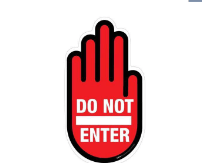Defined as the medical professionals who protect the health of BOTH animals and people.
Veterinarians
This is separating sick animals from healthy ones to prevent disease spread
Isolation
Vets in this sector perform pharmaceutical and biomedical research to develop, test and supervise the production of drugs, chemicals and biological products like antibiotics and vaccines for both animal and human use
Industry
This is the number one principle of animal restraint, above all other considerations.
Human Safety
As an experienced vet tech, you explain to the new hire that you'll handle the next appointment, which is a limping dog. When she asks why, you explain this important safety concept.
Animals are more likely to be aggressive when they are in pain
This aspect of Veterinary Medicine is the universal foundation—it's the objective, evidence-based knowledge of biology, diseases, and treatments that applies to all animals.
Veterinary Medicine as a Science
This is separating those who may become sick after exposure
Quarantine
Veterinarians in this field work at universities and labs to educate students and advance medical knowledge.
Teaching and Research
This type of restraint uses tools like muzzles, noose leashes, and cat bags.
Physical Restraint
Your lead tells you to ensure all windows and doors are closed before your next appointment. She is most likely preparing for this type of patient.
Anxious/ fractious cat
The individualized application of veterinary medicine—it's the subjective skill of using intuition, empathy, and practical judgment to adapt that science to one unique patient, owner, and situation.
Veterinary Medicine as an Art
This health movement calls for collaborative solutions by acknowledging the shared health of humans, animals, and the environment.
One Health One Medicine
In this government-focused role, vets inspect imported animals, supervise transportation, and enforce state and federal welfare laws.
Regulatory Medicine
This type of animal restraint involves administering drugs to induce sedation or immobilization.
Chemical Restraint
Your coworker warns you the next patient is a known "fear biter." You should watch for these cues that will signal to you, it may act on its fear.
Flattered ears, Head down, No direct eye contact, Lips pulled back, Tail between its legs, and perhaps growling
Veterinarians also play critical roles in environmental protection, research, food safety, and _______.
Public health
This program organized by the AVMA provides liability insurance & risk management resources to veterinary professionals. An example of its prinicple's is strongly discourages owners from assisting with restraint due to liability risks.
PLIT Program
These veterinarians work to prevent disease outbreaks, ensure food and water safety, and study environmental pollutants, including pesticides.
Public Health
This tool is considered a "last resort" for controlling a dangerous animal from a distance
Rabies Pole/ Restraint Pole
 A "Do Not Enter" sign is placed on an exam room door, indicating to staff that the patient inside has this kind of disposition or history.
A "Do Not Enter" sign is placed on an exam room door, indicating to staff that the patient inside has this kind of disposition or history.
Aggressive behavior
When you think of a veterinarian, you typically think of this area of work which involves tasks like vaccinating pets, performing surgeries, and advising owners in a clinic setting. They also are the most common area new graduates go into.
Private Practice
American Veterinary Medical Association (AVMA)
This branch includes the U.S. Army Veterinary Corps, where vets care for military dogs and manage disease control programs.
Uniformed Services
Using a soothing or commanding tone of voice to calm an animal is this form of restraint
Verbal / Moral Restraint
A female animal in this reproductive state may show changes in behavior, including increased aggression.
Estrus (heat)